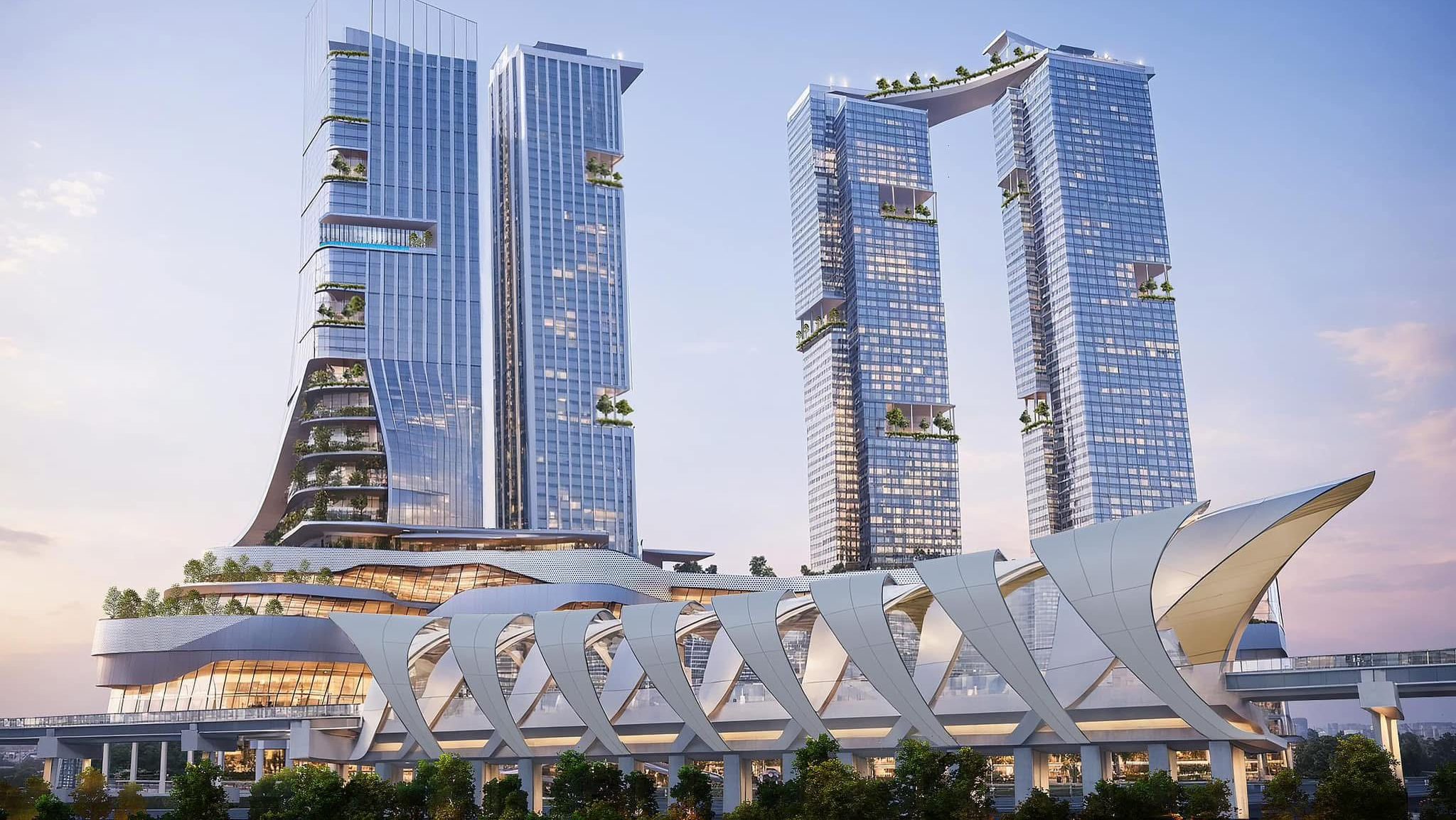MALAYSIA: The Bukit Chagar Integrated Mixed-Use Development, an RM2.6 billion (S$788 million) project, is set to redefine Johor Bahru’s urban landscape. Located at the terminus of the upcoming Johor Bahru-Singapore Rapid Transit System (RTS) Link, this large-scale development will integrate transport, retail, residential, and commercial spaces.
With its ambitious design, the project aims to enhance connectivity, reduce congestion, and spur economic growth in the region. As Malaysia continues to position itself as a key player in regional transit-oriented development, Bukit Chagar stands as a testament to this vision.
Enhancing connectivity with integrated transport
A critical component of this development is its seamless integration with the RTS Link, a 4km cross-border rail line that will connect Johor Bahru to Singapore’s Woodlands North MRT station. Scheduled to be operational by the end of 2026, the RTS Link is projected to carry 40,000 passengers per day, alleviating pressure on the Johor-Singapore Causeway, one of the world’s busiest land crossings.
Currently, 430,000 to 450,000 people use the Causeway daily, surpassing pre-pandemic levels. To accommodate increased commuter demand, a multi-storey park-and-ride facility will be constructed with 1,550 car spaces and 1,015 motorcycle spaces. Nearly 75% of these spaces will be available by November 2026 in anticipation of heightened traffic flows once the RTS becomes operational.
Further improving connectivity, a driverless tram-bus network known as the autonomous rapid transit (ART) system is being considered. ART is designed to transport passengers efficiently across Johor Bahru via elevated tracks on bridges and viaducts. Transport Minister Anthony Loke elaborated on the benefits of ART.
“An LRT system can only accommodate a single rail system, whereas the ART can have the flexibility of both a bus and rail (tram) system… The implementation of the (ART) system is also more economical, and it can be built faster,” he stated, as reported by The Straits Times (ST).
A dynamic mixed-use development
Beyond transport, Bukit Chagar will feature a shopping mall topped by four high-rise towers. These towers will house a hotel, serviced apartments, a health and wellness hub, and education facilities, transforming the area into a vibrant urban centre. While exact figures on residential units and mall space remain undisclosed, the scale of the project suggests that it will significantly impact Johor Bahru’s commercial and residential market.
MRT Corp’s Chief Executive Officer Mohd Zarif Hashim emphasised the transformative nature of this initiative. “Globally, cities have successfully regenerated themselves by integrating transit infrastructure into their urban planning, and the Bukit Chagar Integrated Mixed-Use Development embodies this very concept,” he said, quoted by ST.
Economic implications and regional growth
This development aligns with Malaysia’s broader strategy to boost Johor’s economy. The recently established Johor-Singapore Special Economic Zone (SEZ), covering 3,571 sq km, aims to strengthen trade and investment between Malaysia and Singapore.
Key hubs such as Iskandar Puteri, Tebrau, and Skudai will be linked to the RTS via the ART system, ensuring the smooth movement of people and goods across borders. Sunway Group founder and chairman Jeffrey Cheah believes the Bukit Chagar project could serve as a catalyst for economic expansion in the Greater Johor Bahru region.
Similarly, Transport Minister Anthony Loke highlighted in an article by ST the value of public-private partnerships in infrastructure development, stating, “This collaboration between MRT Corp and Sunway shows how the public and private sector can work together to develop world-class infrastructure without straining public funds.”
Public concerns and scepticism
While the Bukit Chagar development promises numerous benefits, public sentiment remains divided. Several concerns have been raised regarding traffic congestion, project delays, and the viability of the ART system.
A common complaint is that the project may attract even more vehicles into an already congested area. One Facebook commenter remarked, “Just drawing more traffic within the area. Oh well, good luck with the jam.” Despite the planned park-and-ride facility, residents remain doubtful that congestion issues will be adequately addressed.
Another issue raised is the unfinished state of several developments in Johor Bahru. One netizen questioned, “Can they finish building those incomplete buildings first?” highlighting concerns that new projects may face the same fate.
The choice of ART over LRT has also sparked debate online, with some believing it to be the wrong decision. A critic stated, “They chose ART, wrong choice,” indicating doubts about the system’s efficiency and capacity.
Many are sceptical about the projected completion date of 2033. One person cynically noted, “Completed by 2033? More like constructed halfway in 2028,” reflecting a broader distrust in large-scale projects meeting deadlines. Another commenter added, “By the time comes 2033, it’s obsolete already. 8 years is way too long into the distant future. Even the EV chargers would become outdated.”
A bold vision for the future
The Bukit Chagar Integrated Mixed-Use Development presents a bold vision for Johor Bahru, combining public transport infrastructure with residential, retail, and commercial elements. If executed successfully, the project could drive economic growth, reduce cross-border congestion, and establish Johor Bahru as a modern transit-oriented city.
However, lingering concerns over traffic, delays, and long-term feasibility must be addressed to gain full public confidence. As construction begins in March 2025, the coming years will determine whether this ambitious plan can truly reshape Johor Bahru’s urban and economic landscape.
Read also: Three MRT disruptions in a week: Is Singapore’s train network facing deeper issues?

